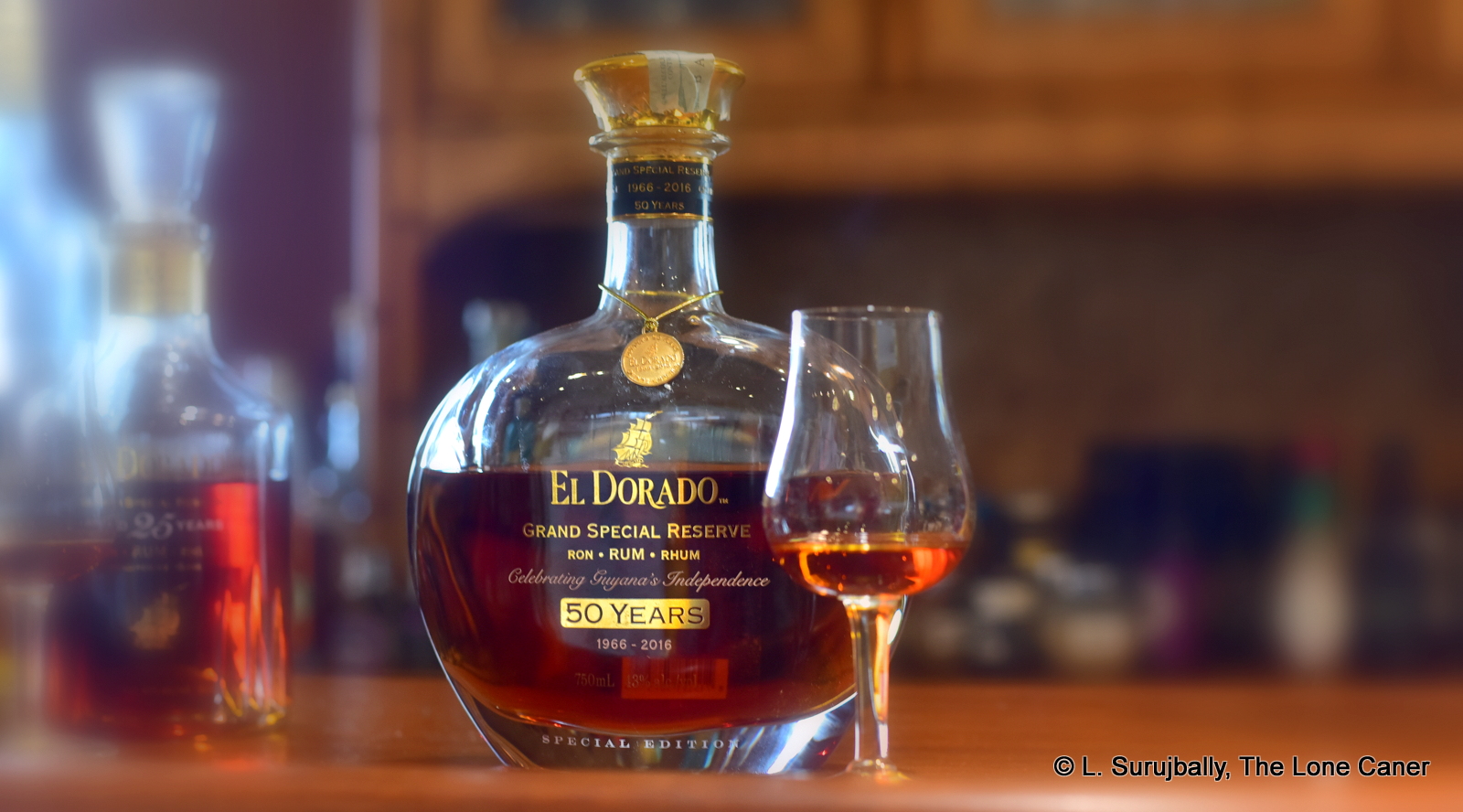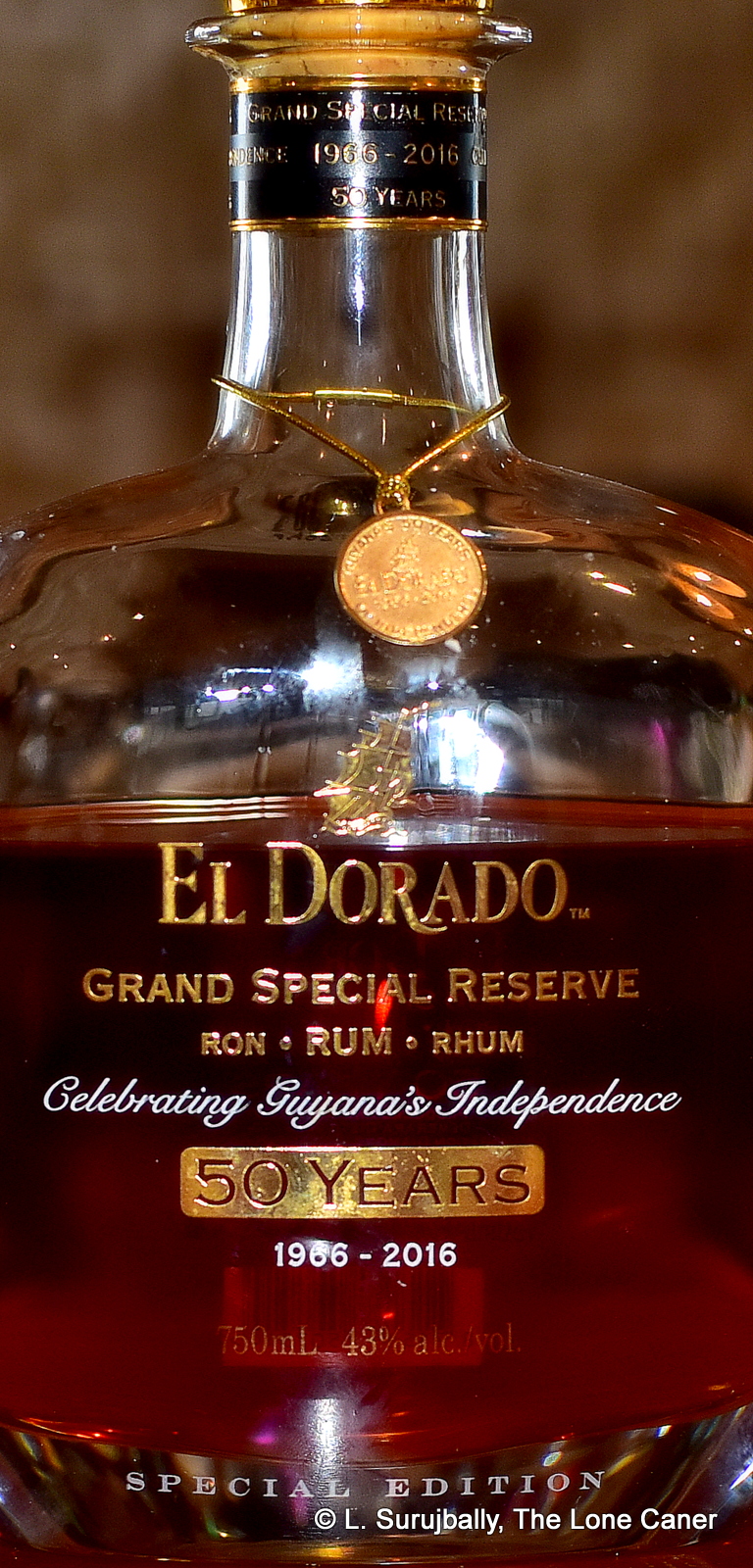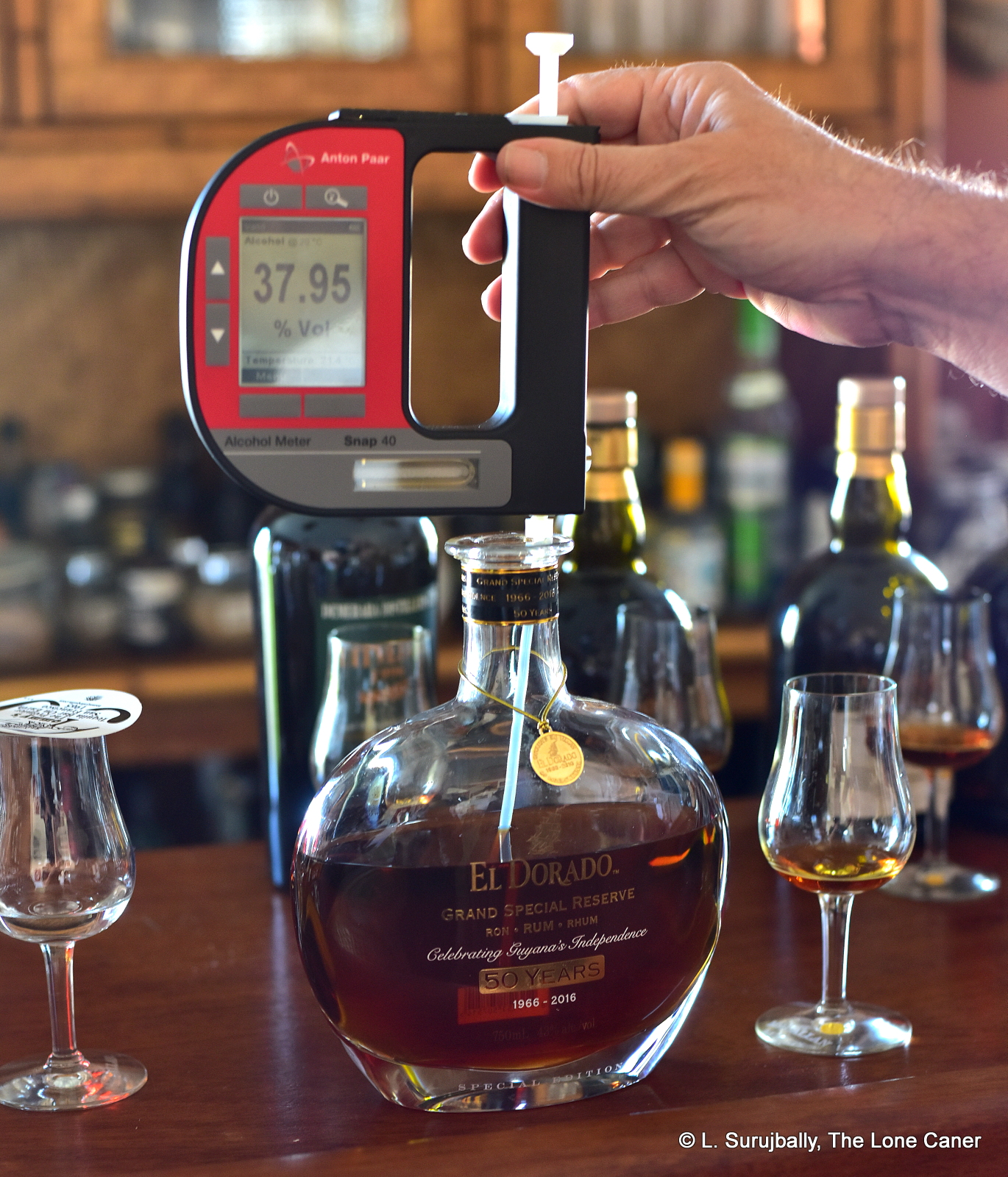
#504
Two of my favourite metaphorical rum-terms are halo rums and unicorns, which are monikers coming to our awareness from opposing points on the spectrum.
A unicorn is a desperately sought-after personal wanna-have, usually characterized by rarity and only sometimes by a high price; Examples of unicorns would be the G&M 1941 58 year old, Velier Skeldon 1973 or Port Mourant 1972, first editions of the Rum Nation line issued in 1999 and 2000, Appleton’s 1960s decanters, or aged agricoles from the 1930s, 1940s and 1950s (or earlier). A halo rum on the other hand is a massively hyped special edition rum, often quite old, almost without fail quite expensive, and of a limited edition, meant to commemorate a special occasion or anniversary in the mind of the producer. They’re not personal and user-driven, but producer-defined, come with cool boxes, fancy designed bottles and and the best known of these is probably the Appleton 50 year old, still, after all these years, selling for a hefty five thousand dollars or so. The Havana Club Maximo is another, and you could make a case for The Black Tot and the Damoiseau 1953 among others. In some cases, of course, a rum can be both at the same time, though I argue a halo can be a unicorn but a unicorn is not always a halo.
 Which brings us to the El Dorado 50th Anniversary offering, with 600 produced bottles selling for a muscular US$3500 or so (each), and bottled at a less beefy 43%, meant to celebrate Guyana’s 50th anniversary of independence in 2016, just as the Appleton 50 did a few years earlier. It is not, as some websites state, a fifty year old rum (the bottle itself notes “50 years” in bold writing which doesn’t help) — by strict definition it is a 33 year old. The Whisky Exchange, which I have no reason to doubt, notes it as being a blend of rums: 65% from 1966, 25% between 1966 and 1976 and another 10% from 1983….so the idea that each of these aged components is from a specific still is likely to be a reasonable assumption (I’ve cobbled together various sources on the parts of the blend in “other notes” below).
Which brings us to the El Dorado 50th Anniversary offering, with 600 produced bottles selling for a muscular US$3500 or so (each), and bottled at a less beefy 43%, meant to celebrate Guyana’s 50th anniversary of independence in 2016, just as the Appleton 50 did a few years earlier. It is not, as some websites state, a fifty year old rum (the bottle itself notes “50 years” in bold writing which doesn’t help) — by strict definition it is a 33 year old. The Whisky Exchange, which I have no reason to doubt, notes it as being a blend of rums: 65% from 1966, 25% between 1966 and 1976 and another 10% from 1983….so the idea that each of these aged components is from a specific still is likely to be a reasonable assumption (I’ve cobbled together various sources on the parts of the blend in “other notes” below).
Trying the rum gives one the initial impression that most of the oversugared nonsense of the various 25 year old expressions (1980, 1986 and 1988) has been dispensed with, and subject to my comments below, this may even be one of the best regular-proofed El Dorado rums ever made – it’s certainly richer and better balanced than the 15 and 21 year old rums in the standard lineup. The nose gives great promise from the start – deep aromas of molasses, licorice, raisins, dark grapes, coffee grounds, cherries and a flirt of acetones, coming together nicely in such a way that they both commingle well, and are individually specific. Trying it on and off over a couple of days allows other smells of musty books, sawdust, pencil shavings, salted caramel, peaches and ripe apples to emerge over time, and that’s pretty cool too, right?
Indeed it is, and on the palate it starts well – salty sweet caramel ice cream, sweet soy sauce, pencil shavings, tart apples, red guavas, ripe apples, bags of licorice (of course), dark chocolate, more coffee, a fine line of citrus and vanilla and smoke. All the hits are playing, all the right notes are being sounded…but underneath it all is a sort of disturbing sweetness, a thickness that dampens down the crispness the nose suggested would continue and deflates the overall experience, moving the taste profile closer to the ED 15 year old. It left me…uneasy, and a little disappointed. The finish of course was reasonable without being exceptional in any way, primarily as a consequence of the living room strength, but that was to be expected, and in any case there’s orange peel, licorice, dark fruits, a little tartness and smoke, so not entirely bad.
But man, that sweetness bugged me, it was a splinter lodged in my mind, and I’m sorry but DDL is known for undeclared dosage, so since I was for once in a position to borrow a hydrometer, I tested it…and the results are what’s shown below:

Well, perhaps I should have expected it. That measurement works out to about 20g/L of additives (whatever they are, let’s assume it’s caramel or sugar and if you convert, that’s about 5 sugar cubes per 750ml bottle). But seriously, what on earth was the addition for? This thing is a super premium, costs four figures, is more than three decades old, is a blend of famous marques everyone knows about…so why? Tradition? Lack of confidence in the original blend? Appeal to the deep-pocketed non-knowledgeable rummies who’ll buy it with petty cash? I mean, wtf, right?
I think that the key to understanding the dosing decision is the target audience: this rum is not made for poor-ass rum-snorting bloggers, or newbies now starting out, or the masses of rum aficionados with corpulent tastes and slender purses (or purse-loving wives). It’s aimed at people who want to show off affluence and power, who know little about rum and a lot about expensive things. Politicians, banana-republic jefes, titans of industry, retired jillionaires, trust fund babies. For such people, this rum, like the Appleton 50, is 100 points easy. Jaded rumistas will see it going down in history as a great hundred-buck rum selling for thirty times that much. My own feeling is that DDL does its premium street cred no favours at all when messing around with their rums at this level and that makes the 50th anniversary a let-down – too well made to leave behind, too old to ignore … and too messed-with to love.
When assessing the Foursquare Criterion in a somewhat differing context, I wrote “my work is to describe what I taste and offer an opinion on the product as it stands, not its underlying production philosophy.” Here, the same rule has to apply, so I must score it as I see it and give a grudging endorsement, because it really is quite decent…but only within its frustrating and unnecessary limitations. And while it may be a halo rum for DDL, for us rum lovers it’s unlikely to ever become a unicorn – which probably makes it a good thing it’s out of our financial reach, because at least that way we won’t be tempted to buy it and shed sweetened ethanol tears after the fact.
(84/100)
Other notes
- Most sources agree that ⅔ of the blend is from the Port Mourant Still (from 1966 – that’s the true 50 year old). Remaining ⅓ is from (variously) the decommissioned John Dore still (laid to age in 1983), the VSG wooden pot still (age unknown) and the French Savalle still (marque ICBU, age unknown). Charred Barrel noted it was a blend of 5 rums so we can only assume the last component is the Enmore wooden coffey still.
- The El Dorado website makes no mention of this rum, perhaps because it’s not part of their standard lineup.
No Responses to “El Dorado 50th Anniversary Grand Special Reserve 33 YO Rum – Review”